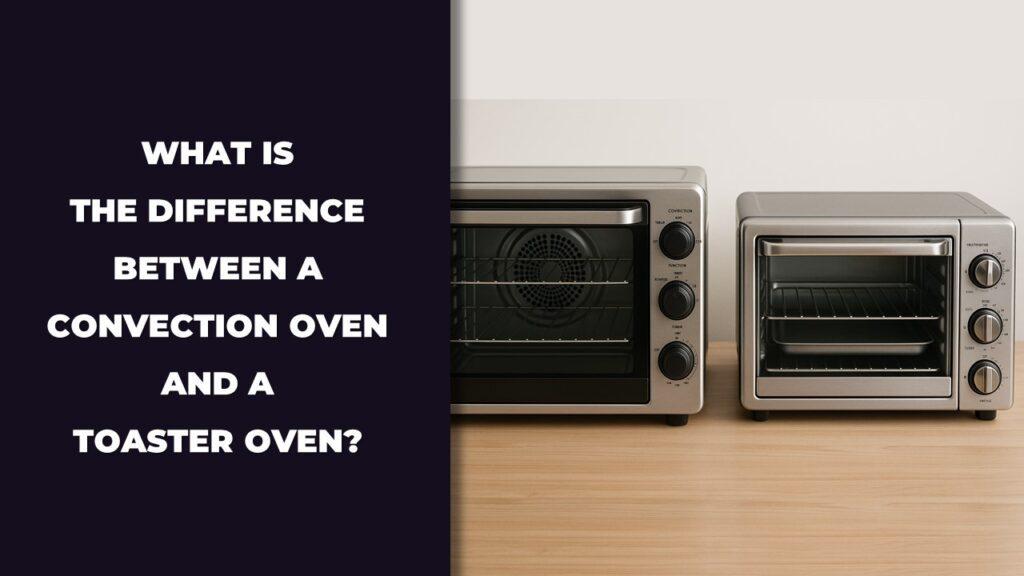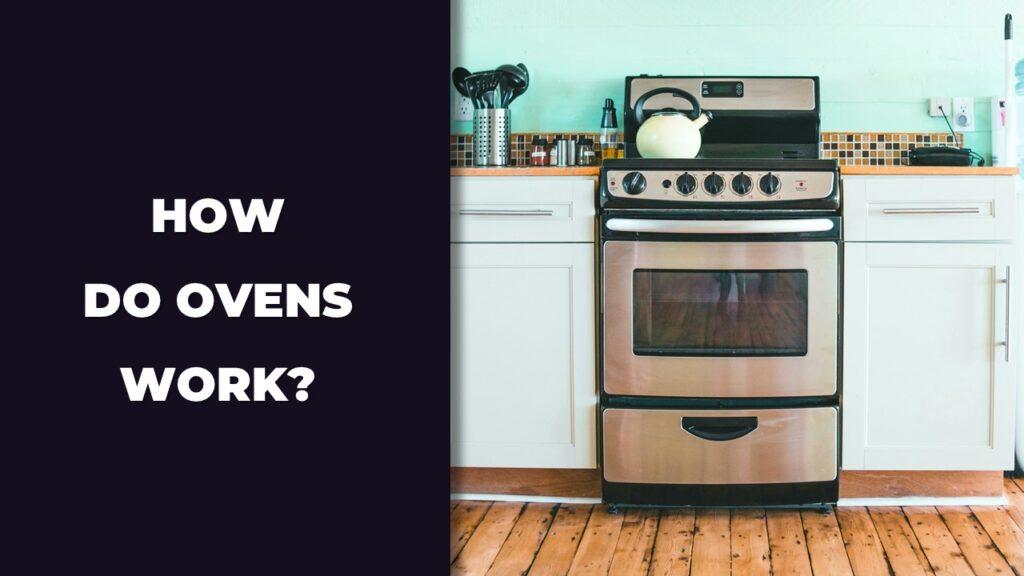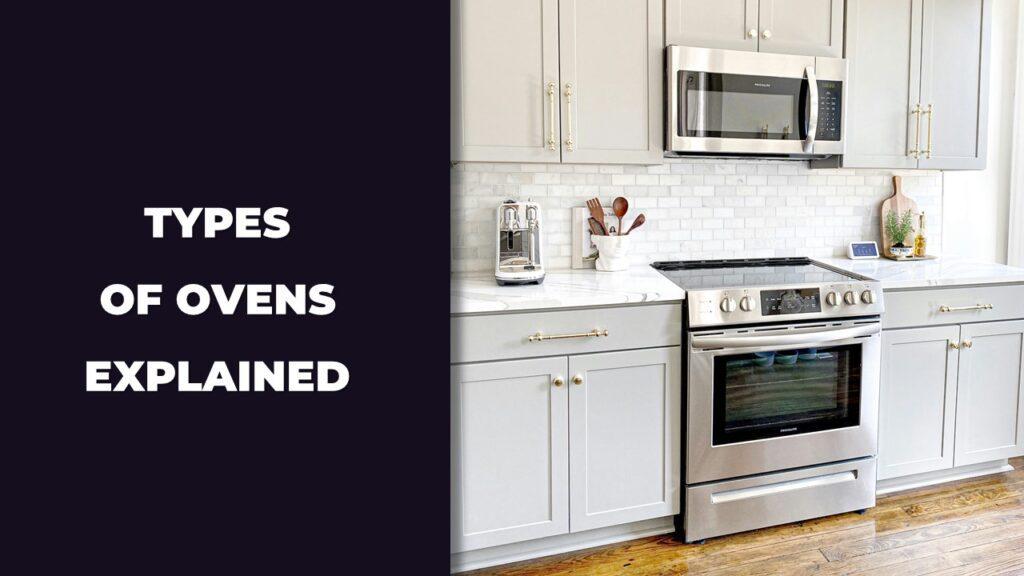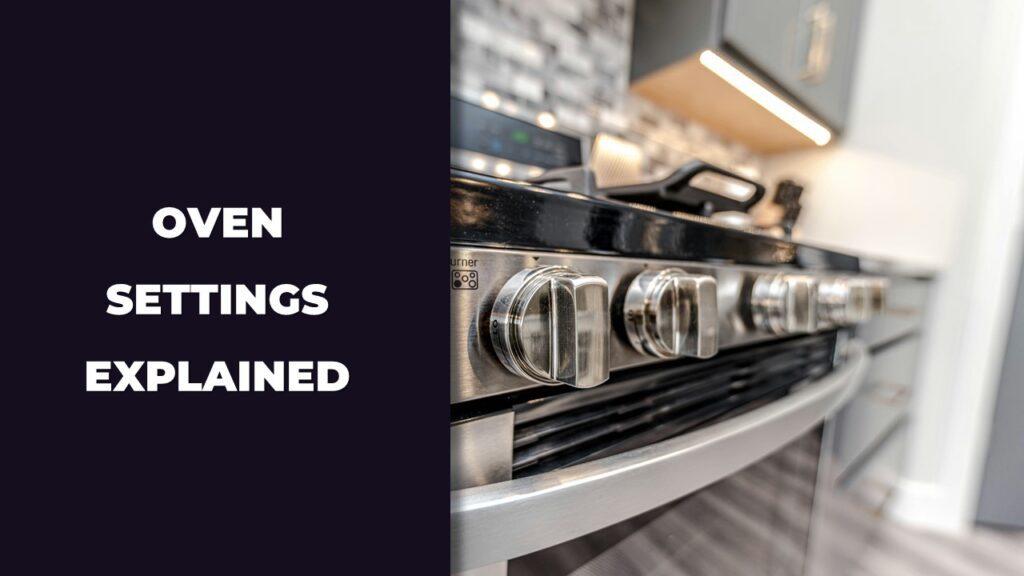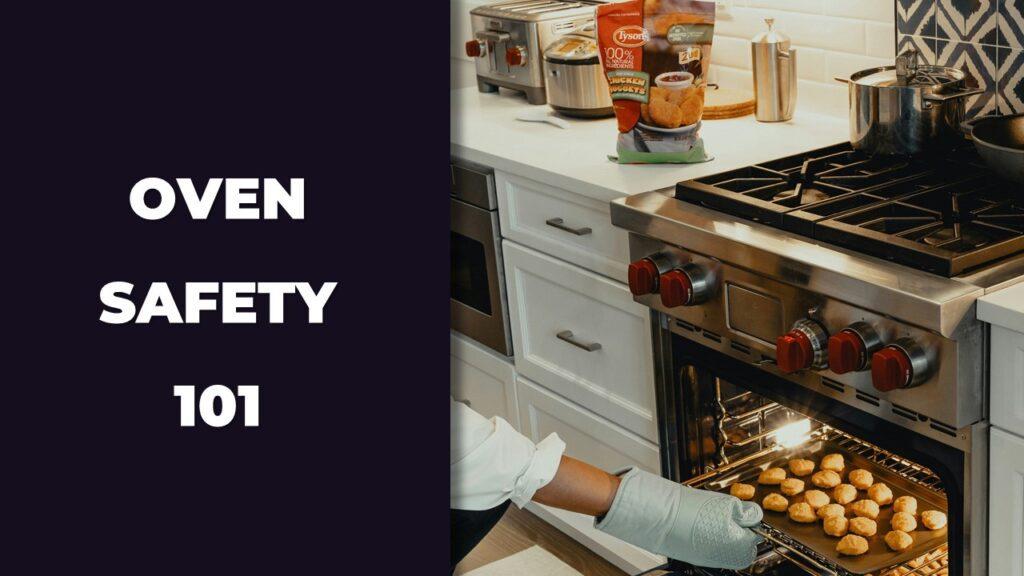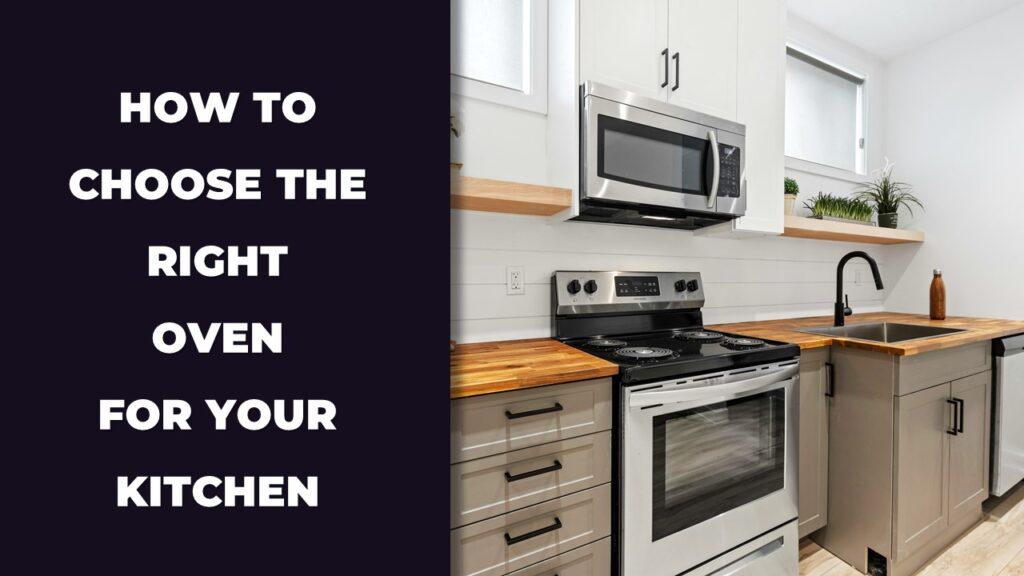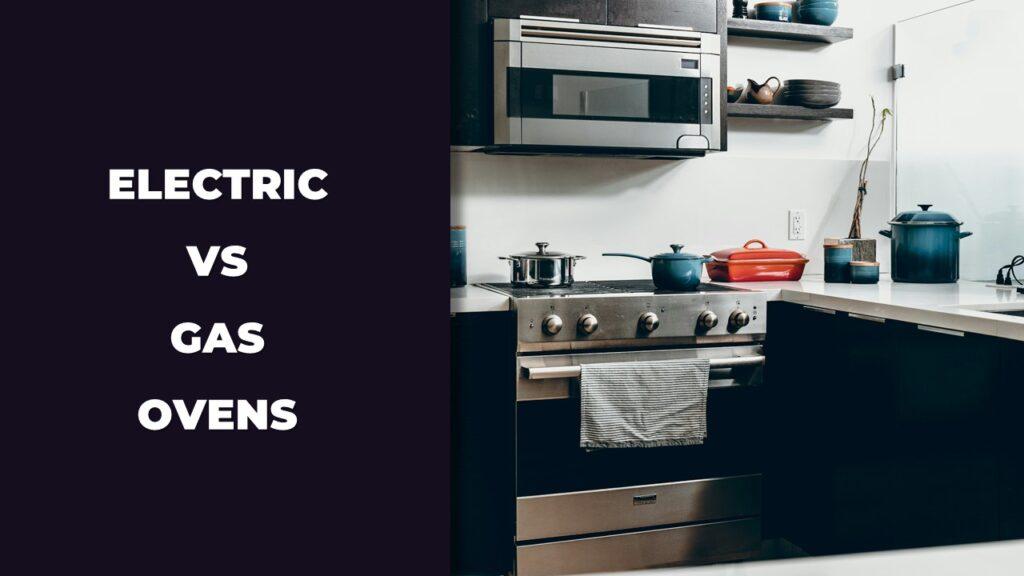
Electric ovens differ from gas ovens in how they heat, how they cook, and what kind of results they give in everyday home cooking. An electric oven uses heating elements powered by electricity, often with a fan that spreads heat evenly across the oven. Gas ovens, on the other hand, rely on an open flame that heats up fast and adds moisture to the air while cooking. That’s why some people swear by gas for roasting meats, while others love electric for baking cakes.
In this article, we’ll walk you through how each oven works, how they affect cooking results, what they cost to run, and what kind of setup they need. If you’re trying to decide between the two, we’ll help you weigh the pros and cons so you can choose what works best for your kitchen and the way we all cook at home.
Quick Summary: Electric vs Gas Ovens at a Glance
Electric and gas ovens work differently and suit different cooking styles. Electric ovens use coil elements and often include fans for even heat, making them great for baking and crisp textures. Gas ovens heat food using an open flame, offering faster preheat and moister cooking, which is ideal for roasting. If you need even results and clean energy, electric might be the better option. If you want quick heat and lower running costs, gas could be your go-to.
Here’s a quick side-by-side look:
| Feature | Electric Oven | Gas Oven |
| Heat Source | Coil Element | Open Flame |
| Preheat Time | Slower | Faster |
| Cooking Moisture | Dry | Moist |
| Energy Cost | Higher (in most regions) | Lower |
| Cooking Control | Even, precise | Faster, manual |
| Use in Power Outage | No | Yes |
How Electric Ovens Work: Heating Elements, Fan, and Thermostat Logic
Electric ovens cook food by heating metal elements with electricity. These elements are often placed at the top and bottom of the oven. Most models also include a fan that circulates hot air, which helps the oven cook more evenly. A thermostat inside tracks the temperature and turns the heating elements on or off to keep things steady. This gives you more control and helps prevent overcooking.
Coil Heating and Convection Fan
At the core of an electric oven are one or two coil heating elements—usually one at the bottom for baking and one at the top for broiling. When electricity flows through the coil, it heats up and warms the air around it. Many modern electric ovens also include a fan, known as a convection fan, which moves the hot air around. This helps keep the heat consistent from corner to corner, so you don’t have one side of your tray cooking faster than the other.
Electrical Requirements and Installation
Electric ovens need a dedicated 220-240V power outlet and are usually hardwired into your home’s electrical system. You’ll likely need an electrician to install it safely. Compared to gas, the process is generally simpler—no ventilation or gas line checks—but it does mean your home must support the right outlet and circuit.
Ideal Cooking Scenarios
Electric ovens are great for baking tasks that need steady and even heat—like cookies, cakes, casseroles, and bread. They’re also perfect for roasting vegetables and meats when you want a crisp, browned finish. The dry heat they produce makes it easier to get crunchy textures on the outside without overcooking the inside.
How Gas Ovens Work: Burners, Ignition, and Flame Control
Gas ovens work by burning natural gas or propane to produce an open flame, usually located at the bottom of the oven. This flame heats the oven quickly and creates a moister cooking environment. When you adjust the temperature, the oven lets in more or less gas, changing the size of the flame. Many newer gas ovens light automatically, while older models may require a match or pilot light.
Flame Heating and Moist Air Environment
The flame sits beneath the floor of the oven and heats the air above it. Since gas produces water vapor as it burns, the air inside a gas oven tends to be more humid than in an electric one. This moist environment helps keep food juicy and prevents it from drying out too quickly. That’s a big reason why many people love gas ovens for roasting meats or baking dishes that need gentle heat.
Gas Line and Safety Compliance
To use a gas oven, your home needs a working gas line. Installing a new one can be expensive if it’s not already there. Gas ovens also need proper ventilation, and installation or repairs must be handled by a certified professional. It’s important to make sure there’s no risk of leaks, so regular checks are part of owning one.
Ideal Cooking Scenarios
Gas ovens are a favorite for dishes like roasts, pies, and baked pasta—anything that benefits from moist heat and doesn’t need super precise temperature control. If you want your food to stay tender or if you often bake in the lower half of the oven, a gas model can work really well. It’s also handy during power cuts, since many models will still function without electricity.
Cooking Performance Compared Between Electric Oven vs. Gas Oven
Electric oven vs. gas oven cooking performance comes down to heat control, moisture, and texture. Electric ovens offer even, steady heat that’s great for consistent baking. Gas ovens heat up faster and create a more humid environment, which can keep food moist but may lead to uneven results. If you’re looking for crisp textures and precise cooking, electric tends to be more reliable. If you roast or reheat often and need speed, gas has an edge.
Preheat Speed and Responsiveness
Gas ovens heat up faster—often in 7 to 10 minutes—thanks to the instant flame. That’s handy if you’re short on time or just reheating a frozen meal. Electric ovens, especially convection types, take longer, around 12 to 20 minutes depending on the model. However, once hot, electric ovens hold temperature better and recover more quickly after the door is opened.
If you’re always rushing dinner after work, a gas oven saves time. But if you’re baking sensitive recipes like soufflés or cheesecakes, the slower but steady heat of an electric oven is worth the wait.
Heat Distribution and Rack Uniformity
Electric ovens, especially fan-assisted ones, spread heat evenly. You can bake a full tray of cookies and expect the same color on every one. Gas ovens are hotter at the top and cooler at the bottom, which isn’t a dealbreaker, but you may need to rotate pans or adjust racks mid-way through cooking.
If you often use multiple oven racks at once (batch baking, meal prepping), an electric oven with convection is the safer bet.
Texture and Moisture Outcomes
Electric ovens produce dry heat, which helps crisp up the outside of foods—great for roasted veggies, baked potatoes, and pastries. Gas ovens create steam as a byproduct of burning fuel, which means a more humid cooking environment. This helps keep roasts juicy and prevents bakes from drying out too fast.
If you’re cooking a roast chicken, gas keeps it moist. But for a pizza with a crunchy crust, electric performs better.
Flavor Differences (Maillard & Caramelization)
The Maillard reaction—the browning that adds flavor to meats, bread, and more—needs dry, even heat. That’s where electric ovens shine. Gas ovens, with their moist heat, may brown unevenly or slower.
If you’re trying to get golden biscuits or a nice sear on meat without using the broiler, an electric oven gives better control. But for slow-cooked stews or braised dishes, gas adds a touch of steam that keeps things tender and flavorful.
Energy Efficiency and Long-Term Cost
Electric vs. gas oven energy efficiency depends on how often you cook and your local energy rates. Electric ovens use less energy per session but cost more to run if your electricity rates are high. Gas ovens are cheaper per use in many areas, but they burn more fuel overall. Over time, the more efficient choice often depends on your cooking habits and utility prices in your area.
Energy Use per Session
| Oven Type | Avg kWh per Use | Cost per Use (@$0.15/kWh or $1/therm) |
| Electric Oven | 0.9–1.2 kWh | $0.13–$0.18 |
| Gas Oven | 1.5 kWh equivalent | $0.09–$0.11 |
Electric ovens are more efficient in how they use energy, but because electricity is usually more expensive than gas, you end up paying slightly more per session.
Formula Example:
If you use your electric oven for 1 hour, 3 times a week:
1.1 kWh x $0.15 x 3 = $0.495/week or $25.74/year
For gas:
1.5 kWh x $0.07 (avg gas rate) x 3 = $0.315/week or $16.38/year
Cost to Operate Annually
For a typical family of four cooking 3–4 times a week:
- Electric Oven: $25–$35/year
- Gas Oven: $15–$25/year
Of course, this depends on where you live. In rural areas, gas might be delivered by tank, which can cost more than city gas. On the flip side, some urban areas have high electricity prices, especially during peak hours.
Tip: Check your utility rates. If your power comes from a renewable source or is priced low during certain times, the gap may shrink.
Appliance Cost and Installation
- Electric ovens often cost more upfront, especially if you go for a convection or smart model. However, they’re easier to install and usually just need a 220-240V outlet.
- Gas ovens tend to be cheaper to buy but may come with added expenses like running a gas line, installing a vent, or hiring a licensed professional for hookup. If you don’t already have a gas line, the cost can jump fast.
If you already have gas installed, it’s often cheaper to stick with it. If you’re building new or remodeling, weigh the extra install cost of gas vs. the long-term running cost of electric.
Safety, Maintenance, And Lifespan
When it comes to long-term use, both electric and gas ovens can last well over a decade. But they differ in how much attention they need, how safe they are in daily use, and how easy they are to fix when something goes wrong. If you’re thinking long-term, here’s what you should know.
Electric Oven Safety and Care
- Electric ovens are generally safer since there’s no open flame or risk of gas leaks.
- They don’t require ventilation or carbon monoxide alarms.
- Repairs are usually straightforward, and most involve replacing heating elements or thermostats.
- Many models include a self-cleaning function, making maintenance easier.
- With regular cleaning and light servicing, an electric oven can last 12–15 years.
Gas Oven Safety and Care
- Gas ovens must be professionally installed and require a working gas line.
- They need proper ventilation to avoid trapping gas or fumes inside the home.
- There’s a risk of gas leaks or combustion if not maintained properly.
- Cleaning around the burner area needs extra care to avoid clogging.
- Like electric models, they can last 12–15 years with proper care, but regular safety checks are more important.
Electric ovens are more beginner-friendly in terms of safety. Gas ovens work well too, but they need a bit more caution and routine oversight.
Which Oven Is Better For Your Kitchen Setup?
Choosing between electric and gas ovens isn’t just about cooking — it also depends on your kitchen layout, what connections you already have, and how much flexibility you need with installation. Here’s how to figure out what fits your space best.
Electric Ovens Fit Most Modern Kitchens
- If your kitchen already has a 240V outlet, electric is usually the easiest choice.
- They don’t need vents or special air systems, making them ideal for smaller kitchens or apartments.
- Great for rentals and newer homes where gas lines may not be installed.
- Just plug in or hardwire — installation is often simpler and faster.
Gas Ovens Work Better in Certain Situations
- If your home already has a gas line installed, it may be cheaper to stick with gas.
- Gas ovens are a practical choice in rural or off-grid areas that use LPG tanks.
- They can still work during power outages, which is a plus if you live in an area with frequent blackouts.
- Installation might take longer since it requires licensed professionals and ventilation checks.
If your kitchen is already wired for electric or doesn’t have a gas hookup, switching to gas could add hundreds in setup costs. Stick with what’s already in place unless you have a strong reason to change.
Environmental Impact: Which Is More Sustainable?
If you’re trying to reduce your footprint, your oven’s fuel source plays a role. Both electric and gas ovens have an impact on the environment, but where your electricity or gas comes from makes all the difference.
How Electric Ovens Stack Up
- Electric ovens don’t burn fuel inside your home, so no indoor emissions.
- If your electricity comes from renewable sources like solar, wind, or hydro, your cooking is cleaner.
- Dry heat from electric ovens doesn’t add moisture or gas byproducts to the air.
- In areas where the grid is clean, electric ovens are a better low-carbon option.
How Gas Ovens Affect the Environment
- Gas ovens burn natural gas or propane, both are fossil fuels.
- They release carbon dioxide and water vapor into your kitchen during use.
- Even though gas burns cleaner than coal, it still adds to carbon emissions.
- For homes without clean electricity access, gas may still be a cheaper but less sustainable option.
If you already use solar panels or live in a region with clean electricity, an electric oven helps reduce your overall emissions. But if your area relies heavily on fossil-fueled electricity, the environmental difference may be smaller.
Dual Fuel Ranges: Best Of Both Worlds?
A dual fuel range combines a gas cooktop with an electric oven, offering precise baking and fast stovetop control in one unit. It’s the go-to option for home cooks who want the responsiveness of gas burners and the consistent, even heat of an electric oven for baking and roasting.
If you do a mix of cooking and baking at home, a dual-fuel setup gives you flexibility and performance that single-fuel options often can’t match.
Why Choose a Dual-Fuel Range
- Best of Both Heating Methods: You get the quick heat control of gas burners for stovetop meals, along with the dry, steady heat of electric ovens for baked goods.
- Better Results for a Wider Range of Dishes: Perfect for recipes that start on the burner and finish in the oven, like pan-seared steak or skillet cornbread.
- Convection Oven Features: Most electric ovens in dual fuel models include convection fans, which help cook food evenly across multiple racks.
- Professional-Grade Cooking at Home: Dual-fuel ranges are commonly found in gourmet kitchens and are built for regular, heavy use.
- Installation Considerations: Requires both a gas line and a 240V electric outlet. If your kitchen doesn’t already support both, installation costs can go up.
If you cook a lot and want more precision in both baking and stovetop tasks, a dual-fuel range delivers reliable performance on both ends. It’s a higher upfront investment, but one that serious cooks often say is worth it.
What Professional Chefs And Bakers Prefer
Professional chefs typically prefer gas cooktops for control and electric ovens for consistency. Many restaurant kitchens rely on a hybrid approach, using gas for fast cooking and electric for baking to get the best results in both areas.
Let’s explore why this combo works—and what you can learn from it for your home kitchen.
Gas Cooktops Are the First Choice for Chefs
- Instant Heat Control: Chefs love gas burners because they heat up instantly and let you adjust the flame with precision.
- Visual Feedback: You can see the size of the flame, making it easier to avoid burning or undercooking.
- Great for Fast-Paced Cooking: From searing to boiling, gas gives chefs real-time control that’s hard to match with electric stovetops.
Electric Ovens Are Preferred for Baking and Roasting
- Steady, Even Heat: Electric ovens maintain a consistent temperature, which is key for baking cakes, pastries, or bread.
- Dry Cooking Environment: Unlike gas ovens, electric models don’t add moisture, which helps produce crisp textures and golden crusts.
- Multi-Rack Performance: Most professional bakers use convection electric ovens because they cook evenly, even when baking several trays at once.
What Kitchens Use in Real Life
- Hybrid Systems: Many commercial kitchens install gas burners on top and electric ovens below to cover all cooking needs.
- Same at Home: Serious home cooks and professionals alike often choose dual fuel ranges for the same reason—they get the control and accuracy needed for different tasks.
If you’re looking to mirror a professional kitchen setup, the winning combo is gas on the cooktop and electric in the oven. It’s not just a chef’s preference—it’s a practical solution for home cooks who want better results without compromise.
Final Verdict: Electric vs Gas Ovens
Electric and gas ovens both offer useful advantages, but the right one depends on how you cook and what matters most in your kitchen. Electric ovens deliver more even cooking, better browning, and are easier to clean and maintain. They’re ideal for baking and households with stable access to electricity.
Gas ovens heat up quickly, cost less to operate in most areas, and create a moister cooking environment, making them a good fit for roasting and daily meals. If your kitchen already has a gas line and you want faster cooking without high electric bills, gas might be the better choice.
For the best of both styles, dual fuel ranges offer the power of gas burners and the precision of electric ovens in one appliance. Whether you’re building a new kitchen or replacing an old unit, knowing the differences between electric vs gas ovens helps you make a decision that fits your cooking style and your home.
Related FAQs
Which oven is cheaper to run: electric or gas?
Gas ovens are usually cheaper to run because natural gas costs less than electricity in most areas.
Can electric ovens brown food like gas ovens?
Yes, electric ovens often brown food better due to their dry, even heat—especially in convection models.
Is it safe to cook with gas ovens indoors?
Yes, gas ovens are safe indoors when installed correctly and used with proper ventilation.
Do gas ovens need electricity to ignite?
Many modern gas ovens need electricity for ignition and digital controls, but some models can work without power.
What’s the lifespan of electric vs gas ovens?
Both electric and gas ovens typically last 12 to 15 years with regular cleaning and proper care.

At our core, we’re a group of passionate households and gardening tools and appliances users and enthusiasts. We dive deep into the world of tech, especially when it’s about your household or gardening electric items. We try to provide as much value to the readers with our information and how to blog articles as possible. For affiliate articles our honest and transparent reviews of essential tech products are rooted in real-world experience. We take great satisfaction in offering unbiased evaluations, ensuring that you can make informed decisions when investing in your desired techs.

